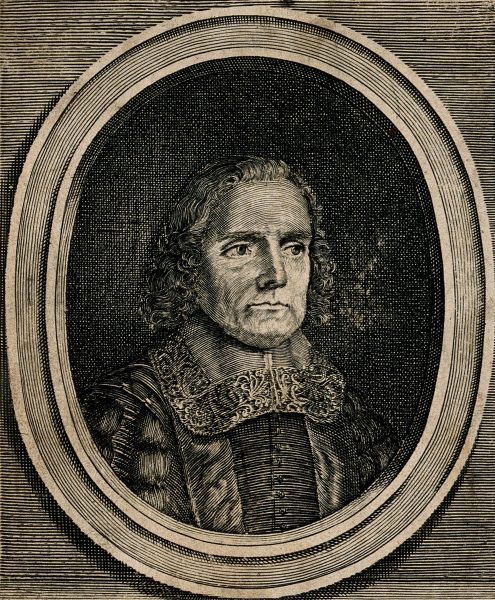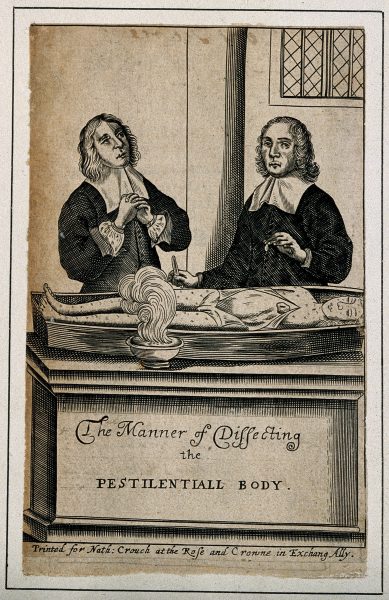George Thomson

George Thomson (image credit: Wellcome Collection, reproduced under a CC BY licence).
George Thomson (1619–1677) joined the royalist army during the English Civil Wars. He fought in several successful battles in Cornwall and took part at the Second Battle of Newbury on 27 October 1644, where he was taken prisoner. You can find out what it was like at the Second Battle of Newbury by reading some of our petitions from other soldiers who fought in that encounter here. Thomson had undertaken some study of medicine before the Civil Wars but after his release from prison, he completed his qualifications and become a doctor in Rochford, Essex. He promoted the use of scientific observation and undertook medical experiments, including the first successful splenectomy (removal of the spleen) which he performed on a dog. This brought him to the attention of famous doctors and scientists such as William Harvey and Robert Boyle.
By 1659, Thomson had moved to London and he remained in the capital throughout the Great Plague of 1665. He was strongly critical of other doctors who fled London during the plague, likening them to deserters from an army who ought to be punished. Thomson became very interested in the plague, studying the disease and even dissecting the body of a plague victim. He successfully treated several people and sold medicines that he claimed would cure the plague. He published his observations in Loimologia: a Consolatory Advice, and some Brief Observations Concerning the Present Pest. In this book:

George Thomson dissecting the body of a plague victim (image credit: Wellcome Collection, reproduced under a CC BY licence)
- Thomson accepted that plague was a judgement from God.
- However, he rejected the views of doctors who believed that the alignment of the stars and planets caused the plague as ‘absurd and ridiculous’.
- He agreed that bad airs might help spread the plague, blaming filthy and rotting matter in confined spaces.
- He rejected medicine based on the ‘four humours’ and dismissed the effectiveness of blood-letting, vomiting and purging as treatments for the plague.
- Instead, Thomson favoured chemical remedies. To cure the plague, he prescribed mixing sulphur with wine or strong beer, a large amount of horseradish root and up to ten drops of saltwater. He argued that drinking this mixture was much more successful than London Treacle. He also suggested burning sulphur throughout houses to get rid of the bad air.
